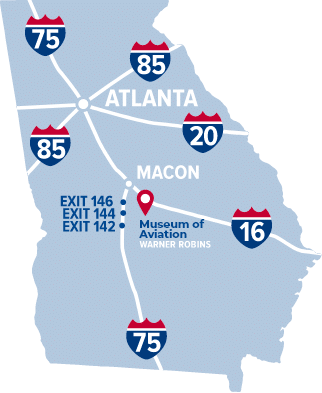The versatile “swing wing” F-111 entered the USAF inventory in 1967. The F-111’s wings are straight for takeoffs, landing or slow speed flight, but by sweeping its wings rearward, in can exceed twice the speed of sound (Mach 2). In 1960 the Department of Defense combined the USAF’s requirement for a fighter-bomber with a Navy need for an air superiority fighter, though the Navy eventually cancelled its program. In all, 566 F-111s of all series were built; 94 of them were production F-111Es.
The F-111 was a long-range, all-weather strike aircraft capable of navigating at low level to reach targets deep in enemy territory and to deliver ordinance on the target. Primarily a bomber, the F-111 featured a sweep wing varying between 16 and 72.5 degrees, with side-by-side seating for a pilot and weapons systems officer.
The Warner Robins Air Logistics Center was responsible for all program and logistics support for the F-111s avionics, communications, navigation and targeting systems. The F-111E on display was delivered to the USAF in November 1970 and assigned to the 27th Tactical Fighter Wing at Cannon AFB, New Mexico. In January 1971 it was transferred to the 20th Tactical Fighter Wing (USAFE) at RAF Upper Heyford, Great Britain. The aircraft remained at Upper Heyford until it was retired in December 1993 and flown to Robins AFB. It was placed on display at the museum in 1995.











